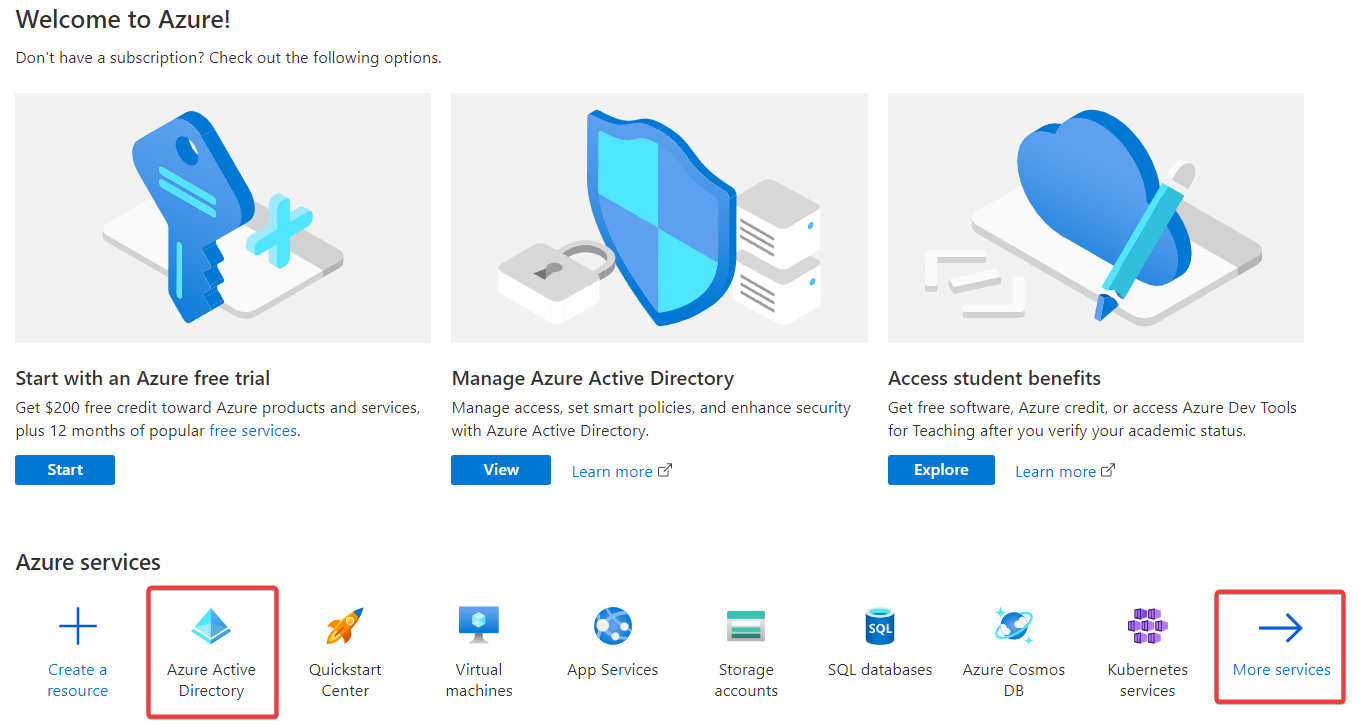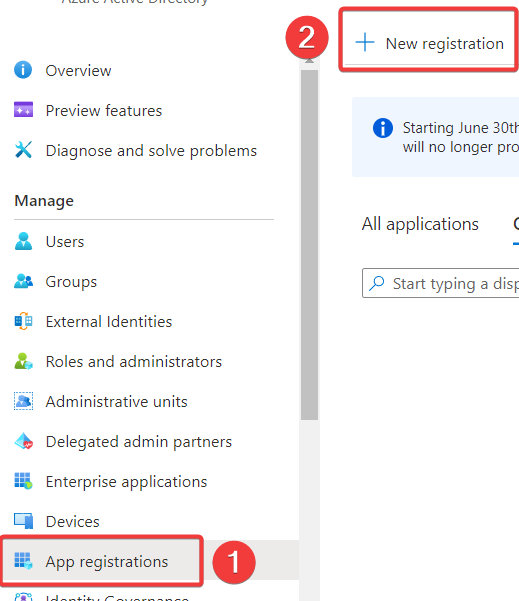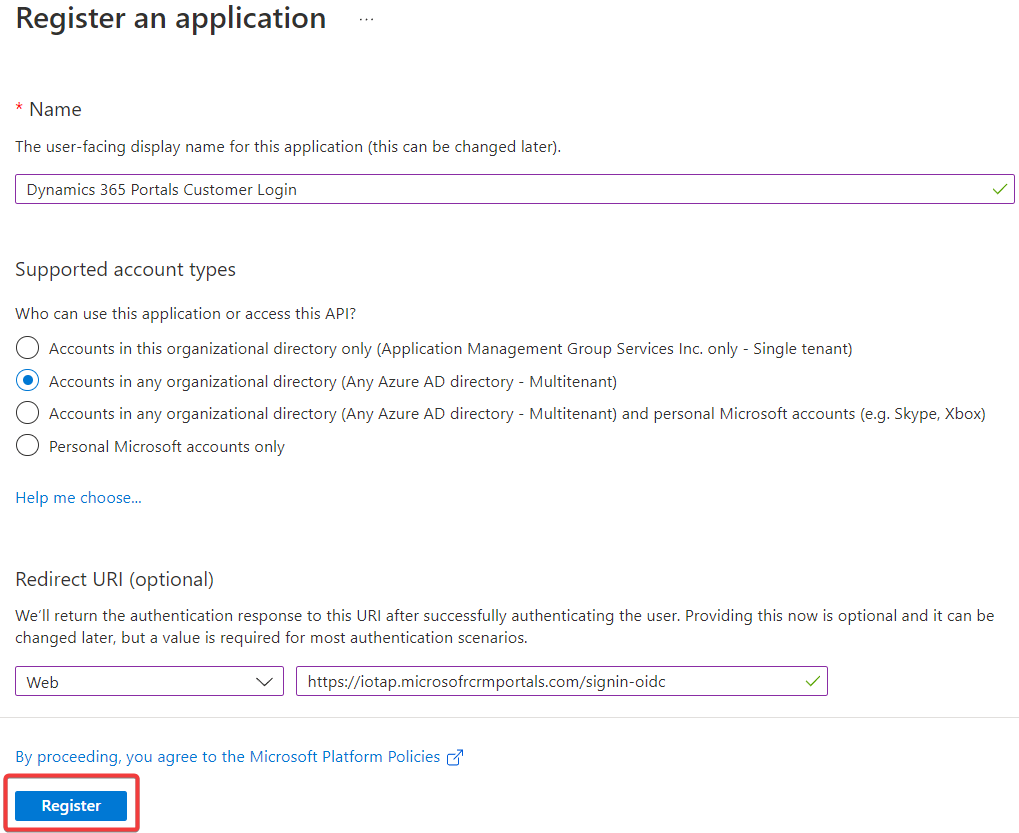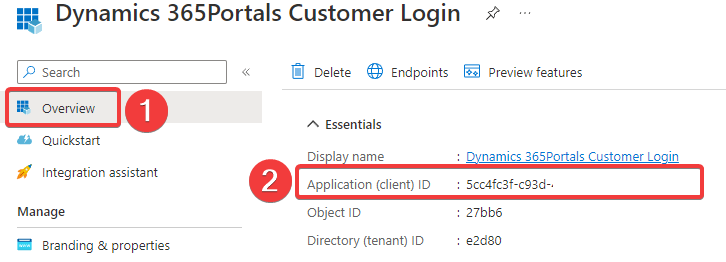Azure AD Integrated Login
This article provides the steps to configure your Dynamics 365 portal to work with your customer’s or partner’s Azure AD without having to add them as guest users in your own Azure AD.
Pre-requisites
Performing this configuration will require the following:
- Portal Owner privileges
- Azure Admin privileges on the tenant
Time required
This configuration is expected to take approximately 15 minutes
Additional Notes
If you change your domain and/or change your portal Base URL, these steps will need to be re-run, specifically step #3
Procedure
- Login to Azure Portal using the Global administrator account and click on the 'Azure Active Directory' icon within the Azure Services section. If you do not see the 'Azure Active Directory' icon, click on More Services

- Click on 'App Registrations' on the left-hand navigation menu and then click the ‘+ New Registration’ button on the right-side pane

-
Paste your Self-Service Portal URL:
-
Name Value Dynamics Portal URL
-
-
Copy the following values:
-
Name Value Redirect URL
-
-
Make sure you have entered all required information and paste the Redirect URL from the previous step, then click the 'Register' button

- Within the newly created app, click the 'Authentication' menu on the left-hand side navigation. On the right-hand pane, check the boxes below and click 'Save'

-
Click on 'Overview' on the left-hand navigation menu and copy the 'Application (client) ID'

-
Make sure to save or share with Work 365 Support team the 'Application (client) ID' as this will be required for further steps.
Your SSP Integrated login setup has been completed.
Updated about 2 years ago
